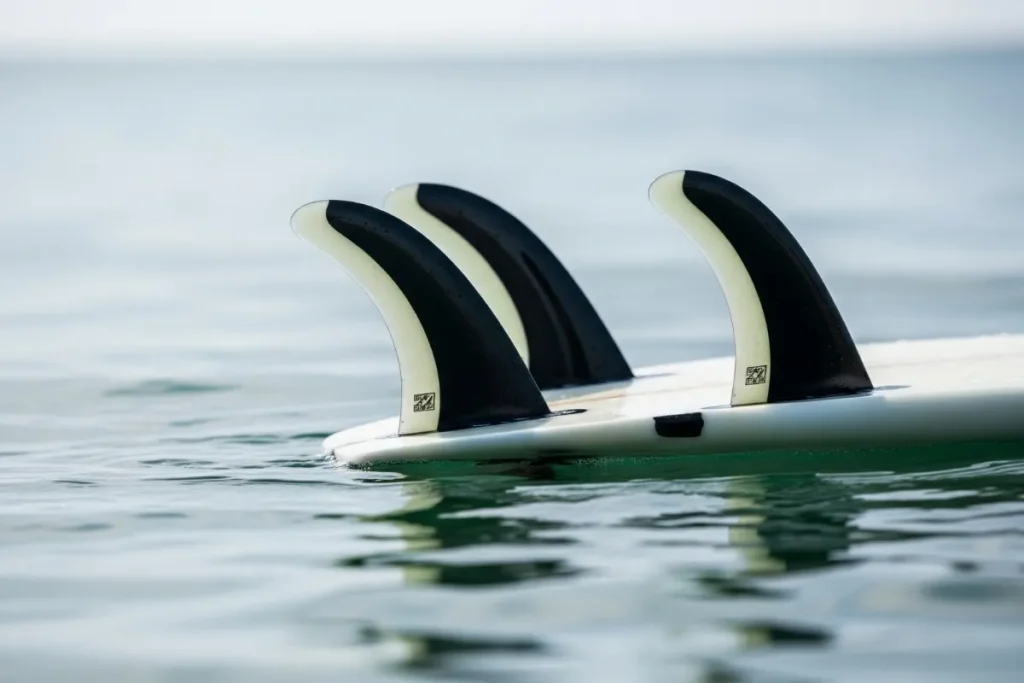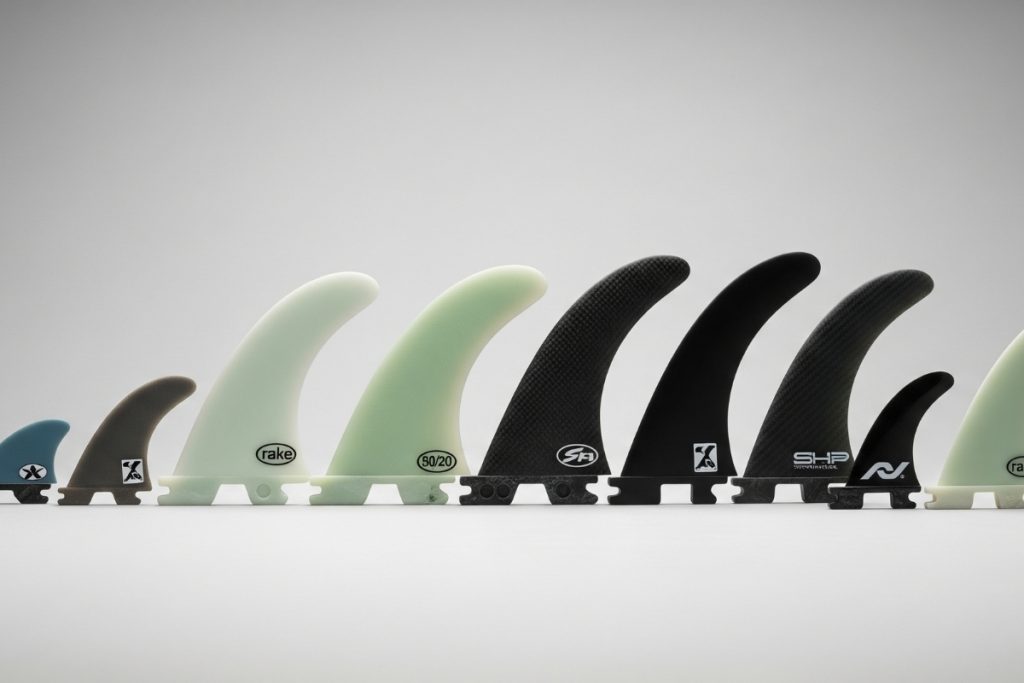Welcome to the ultimate guide on surfboard fins! At our shop, we believe that understanding your equipment is key to progressing your surfing. Often overlooked, your fins play a crucial role in how your board performs in the water. Choosing the right surfboard fins can dramatically enhance your speed, maneuverability, and overall surfing experience.
This comprehensive article will break down the complexities of how to choose surf fins. We’ll delve into the various aspects of fin design, including size, shape (foil, rake, base, depth, cant), and materials. Whether you’re a beginner just learning the basics or an experienced surfer looking to fine-tune your performance, this guide will provide you with the knowledge to make informed decisions.
We’ll also touch upon popular fin systems like FCS fin types, helping you navigate the options available on the market. Our goal is to make this technical subject accessible to everyone, empowering you to select the perfect set of fins to match your surfboard, your surfing style, and the wave conditions you typically encounter.
So, get ready to dive deep into the world of surfboard fins. By the end of this guide, you’ll have a solid understanding of how these seemingly small appendages can make a huge difference in your surfing. Let’s unlock the potential of your surfboard together and help you take your surfing to the next level!
Understanding the Importance of Surfboard Fins

Surfboard fins are more than just plastic or fiberglass appendages attached to the bottom of your board. They act as the underwater steering and control system, influencing everything from your board’s stability and drive to its ability to turn and generate speed. Without fins, a surfboard would be virtually uncontrollable, skidding across the water without direction.
Think of fins like the rudder and keel of a boat, or the wings and tail of an airplane. They provide the necessary resistance and leverage that allow you to lean into turns, hold a line on the wave face, and generate speed through pumps and maneuvers. The amount of hold and release a fin provides is crucial for different surfing styles and wave types.
Different fin setups, such as single fins, twin fins, thrusters (three fins), and quad fins (four fins), offer distinct performance characteristics. The choice of fin setup, combined with the individual characteristics of each fin, significantly impacts how your surfboard feels and responds under your feet.
Investing time in understanding the role of surfboard fins and how different designs affect performance is a worthwhile endeavor for any surfer. By making informed choices, you can unlock the full potential of your surfboard and tailor its performance to your specific needs and preferences, ultimately leading to more enjoyable and progressive surf sessions.
Key Factors in Choosing Surfboard Fins
When it comes to how to choose surf fins, several key factors come into play. These include the size of the fin, its shape (which encompasses various aspects like foil, rake, base, depth, and cant), and the material it’s made from. Each of these elements contributes uniquely to the overall performance characteristics of the fin.
Fin size is generally related to your body weight and the size of your surfboard. Larger surfers and bigger boards typically require larger fins for adequate hold and control, while smaller surfers and boards perform better with smaller fins that offer more release and maneuverability. However, personal preference and surfing style also play a significant role in determining the ideal fin size.
The shape of a fin is arguably the most complex aspect to consider. The foil refers to the cross-sectional shape of the fin, influencing water flow and lift. Rake (or sweep) describes how far back the fin curves, affecting turning radius and drive. The base is the length of the fin where it attaches to the board, influencing drive and acceleration. Depth is how deep the fin extends into the water, affecting hold. Cant is the angle at which the fin is angled outwards from the bottom of the board, influencing responsiveness during turns.
Finally, the material of the fin affects its flex and overall feel. Common materials include fiberglass, plastic (often reinforced), and carbon fiber. Fiberglass fins offer a good balance of flex and stiffness, while plastic fins are more budget-friendly but generally less responsive. Carbon fiber fins are lightweight and stiff, providing maximum drive and responsiveness.
Exploring Different Surfboard Fin Shapes and Their Impact

The shape of your surfboard fins profoundly influences how your board handles. Let’s delve deeper into the key elements of fin shape and their impact on performance. Understanding these nuances is crucial when considering how to choose surf fins for your specific needs.
The foil of a fin is the hydrodynamic cross-section. A symmetrical foil (50/50) is typically found on center fins of single-fin setups, providing stability. Beveled or foiled inner faces help water flow smoothly off the inside of the fin during turns, increasing lift and reducing drag. Different foil designs cater to various surfing styles and wave conditions.
Rake, or sweep, refers to the angle of the fin tip in relation to the base. Fins with a high rake angle (more curved) are typically associated with drawn-out turns and smooth carving. They offer a predictable feel and are well-suited for open-face waves. Fins with less rake (more upright) allow for quicker, more pivot-like turns and are often favored for tighter pockets and aerial maneuvers.
The base of the fin is the length of the fin that connects to the surfboard. A longer base generally provides more drive and acceleration, helping you generate speed down the line. A shorter base allows for quicker release out of turns and a looser feel.
Depth refers to how far the fin extends downwards from the bottom of the surfboard. Deeper fins offer more hold and stability, particularly in steeper or more powerful waves. Shallower fins provide more maneuverability and a looser feel, making them suitable for smaller, weaker waves.
Cant is the angle at which the fins are tilted outwards from the vertical axis of the surfboard. More cant generally results in increased responsiveness and easier rail-to-rail transitions, making it easier to initiate turns. Less cant provides more drive and a straighter tracking feel.
Navigating Different Surfboard Fin Setups
Beyond individual fin characteristics, the setup of your surfboard fins significantly impacts performance. The most common setups are single fins, twin fins, thrusters (three fins), and quad fins (four fins), each offering a distinct feel and set of advantages. Understanding these differences is key when considering how to choose surf fins.
Single fins are the original surfboard fin setup, providing a classic, smooth ride with plenty of hold in down-the-line surfing. They excel in clean, open-face waves, offering a predictable turning arc. Single fins emphasize trim and flow, encouraging a more stylish and drawn-out approach to surfing.
Twin fins offer a loose and skatey feel, prioritizing speed and maneuverability in smaller to medium-sized waves. They are known for their ability to generate speed quickly and allow for sharp, carving turns. Twin fins can feel less stable than thrusters at high speeds or in powerful surf but offer a playful and exciting ride.
Thrusters, or three-fin setups, are the most popular and versatile fin configuration. They provide a balanced combination of stability, drive, and maneuverability, making them suitable for a wide range of wave conditions and surfing styles. The center fin adds stability and control, while the side fins provide drive and responsiveness for turns.
Quad fins utilize four fins, typically two on each side of the board. This setup offers exceptional speed and drive, making it ideal for fast, down-the-line waves. Quads also provide good hold in steeper sections and can generate powerful carving turns. They often feel very fast and loose, with a smooth transition from rail to rail.
Experimenting with different fin setups can significantly alter the performance of your surfboard. Consider the type of waves you typically surf and your preferred surfing style when deciding which fin setup is right for you.
Understanding FCS Fin Types and Other Systems
When it comes to attaching your surfboard fins, various fin systems exist. One of the most prevalent is the FCS fin types system, which has evolved over the years. Understanding these systems is essential when you how to choose surf fins as they determine compatibility with your surfboard.
The original FCS (Fin Control System) utilizes two plugs per fin, requiring small grub screws to secure the fins in place. This system is widely adopted and offers a broad range of fin options from various manufacturers. Installing and removing FCS fins is relatively straightforward.
FCS II is the updated keyless system. It allows for fin installation and removal without the need for tools. FCS II fins feature a clever connection mechanism that locks the fin securely into the plugs. This system offers convenience and is becoming increasingly common on newer surfboards. However, FCS II fins are not directly compatible with original FCS plugs, although adapter kits are available.
Beyond FCS, other fin systems exist, such as Futures Fins. Futures utilize a single, stronger box that the entire base of the fin slides into and is secured with a single screw. Futures are known for their solid connection and are favored by some surfers for their robust feel.
When purchasing a surfboard or new fins, it’s crucial to ensure compatibility between the fin system on your board and the fins you choose. Most surfboards come with a specific fin box system, and all surfboard fins are designed to be compatible with a particular system.
Our shop offers a variety of surfboards and surfboard fins compatible with different systems, including various FCS fin types. Always check the specifications to ensure a proper fit and optimal performance. By understanding these different fin systems, you can confidently how to choose surf fins that will work seamlessly with your board.

